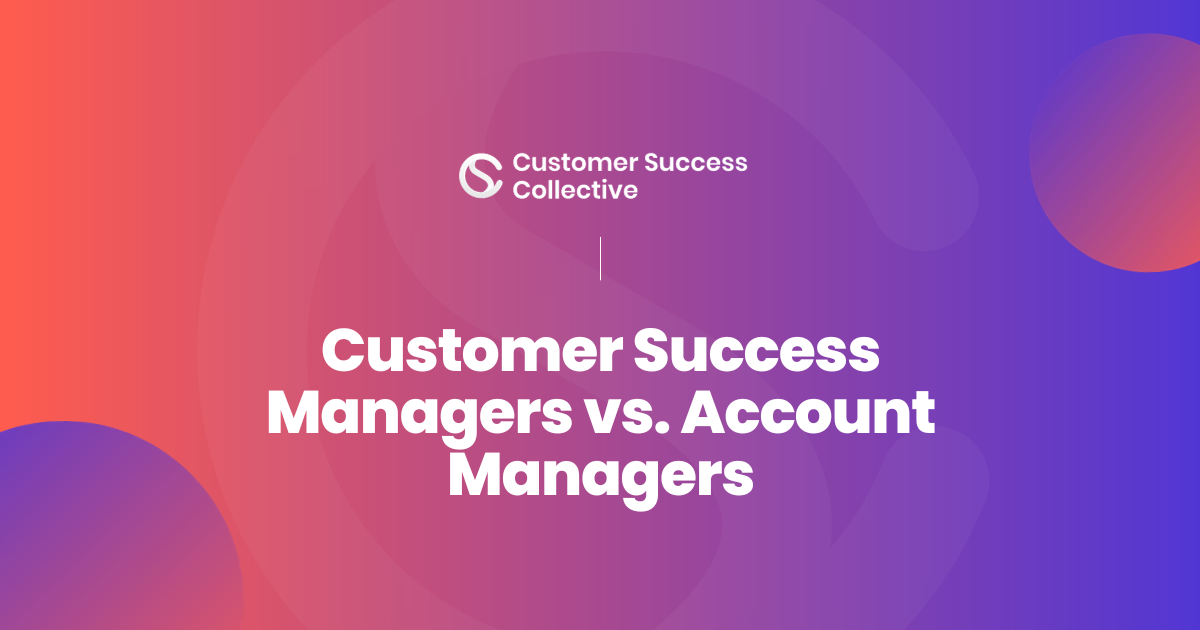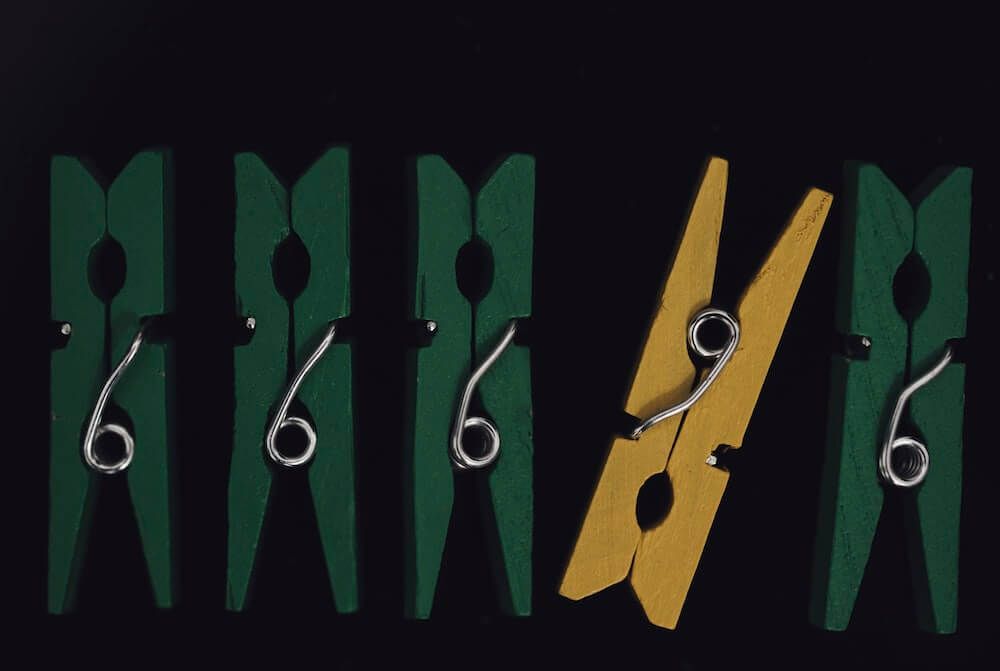When I first started as a Customer Success Manager (CSM), one of the most challenging parts was identifying up-sell opportunities to grow current clients. There’s no doubt that there are so many different upselling techniques, so my goal here is to share the learnings I gained throughout my career in customer success regarding upselling best practices.
But before we dive into it, I’d like to get the definitions out of the way as there are two different ways to grow your customers, either through upselling or expansion opportunities.
What is upselling?
Upselling is about encouraging the purchase of anything additional in the same selling interaction. In other words, upselling can be described as a sales technique where a seller invites the customer to purchase a higher tier of the current services offered.
What is cross-selling?
Cross-selling can be described as selling an additional product or service related to an original purchase to generate more revenue. Still not super clear on the difference between upselling and cross-selling? I get it. Let’s go over an example together to make it crystal clear.
Let’s say a company sells computer software and it also offers additional employee training for its customers; that would be an example of cross-selling.
To make it even easier to understand the difference between cross-selling and upselling, we can dig into examples in the retail industry. Let’s say you got sold a deal by Apple to get two iPhones instead of one because they had a 50% discount on the second one; this would be an upsell for Apple.
Now, let’s imagine you bought one iPhone and you purchased an Apple Watch along with it – this would be a cross-sell
The three phases of upselling
Every organization approaches upsells differently. Sometimes upsells are fully managed by customer success teams; sometimes CSMs are only responsible for identifying upsell opportunities or priming their customers for upsells and the opportunity is closed by the sales team.
In either scenario, Customer Success Managers identify and pursue the upsell opportunity through three phases:
- Phase one: Identifying upsell opportunities (CS) - see strategies 1-8 below
- Phase two: Pursuing upsell opportunities (CS) - see strategies 8-10 below
- Phase three: Closing the upsell opportunity (CS + sales)
Let’s dig in.
1. Identify the customers that are most profitable and worthy of your time
Let's be real, not every customer you manage will have an upsell opportunity. You need to manage your time wisely and identify a select number of customers to upsell to.
Usage is one of the most fundamental ways to recognize customers that might grow with your offering. Usage data informs you which accounts have highly active users and could be more interested in learning how you can bring them added value.
Make sure to get a notification when a customer hits their quota or is close to hitting their usage limits with their current tier. Once they hit that number, you can reach out to them with a short-but-sweet email like the one below:
“Congratulations! You’ve successfully hit XXX of XXX today. You have XXX seats/credits left in your plan. Your account executive and I would like to discuss the options available to help you save in bulk and meet your growing business needs.”
As you can hear from the tone of this email, it is all about taking advantage of natural usage milestones and giving customers the offerings that are best suited for their growing needs.
2. Take the time to understand what success means to them
Assuming you now have a list of customers you want to work with on an upsell, the next step is all about having a firm grasp on what success means to them.
Supposing you had a successful onboarding call with your customer, in that case, you should already have a good understanding of what your customer wants to get out of this partnership, their success metrics, and how they define success with using your product. However, if not, no need to worry.
Go ahead and schedule a call to discuss what your customer wants to gain from using your product. This is your chance to explore not only the immediate goals but also your customer’s long-term plans.
The more you know your customer’s priorities, the more customized you can get with your recommendations, making them 100% match what your customer is looking to accomplish. When you build trust in this way, your customer will know you‘re genuine and not just trying to sell to hit your quota.
Make sure that you’re done with this step going any further in the upselling journey.
3. Use customer feedback scores to decide when to upsell
In customer success, we have a myriad of opportunities to gather customer feedback showing us when they might be ready to take their partnership with your company to the next level. Let’s look at three great sources.
- NPS: Be proactive and look into how your customers are engaging with the rest of your company. NPS scores are among the most significant indicators for collecting meaningful feedback and identifying what matters most to your customers and users. Your champions or advocates will most likely share tons of feedback through the different channels they use to interact with your company.
- Support tickets: Support tickets carry a wealth of valuable product feedback. Customers reach out to support when either they have product-related questions, how-to questions, or can’t figure out how to achieve what they aimed to with your services. This means that the feedback you’re looking for is already at your fingertips. Let’s say your customer has been requesting a specific reporting type that your product doesn’t currently offer, but your product team has recently launched a robust reporting feature as part of add-on service. Boom! Don’t hesitate to reach out and share the good news. This is an amazing opportunity to get your customer excited about the potential value your service can add.
- QBR: Quarterly and annual business reviews lay the groundwork for understanding what your customers are happy with and what they want more of moving forward. As you go through your business review with your customers, they’ll have additional feedback, which will give you all the hints you need to understand what else could help them save time and money. It’s about asking the right questions. You need to make sure that you know their business growth goals and needs very well; that way, you can open upsell conversations naturally. At the end of the day, you’re not a salesperson pitching another offering – you advocate for your customers. You’re solely there to make sure your customer can thrive by leveraging your services at scale.

4. Know your stakeholders and be on the alert for new users
Customer Success Managers work with many different stakeholders throughout the customer’s journey from customer onboarding to renewal. Along the way, there will be some users on autopilot, who use your services without ever interacting with you.
As a successful Customer Success Manager, you need to keep tabs on the new users signing up to your customer's accounts and their use cases. There might be two types of users in this scenario:
- Users from a new department – potential expansion: Great news! Someone from a different department is looking into your product. It’s time to introduce yourself and ask them if they would be down to jump on a quick call. They may not even know that they may have a dedicated CSM, so be proactive and show them some CS love. This will help you understand what they want to achieve with your product.
- New users from an existing department – upsell: All too often, a new team member gets invited by the admin to check out the team's tools. Unfortunately, admins don't have the time to introduce the new user to the dedicated CSM. It happens! Again, be proactive and drop a line to introduce yourself and understand this new user's role and how they’ll engage with your product moving forward.
Is the user there to manage a whole new program? Does that mean that they might need more seats to leverage your offering? Regardless of how your pricing works, you can tailor your questions to get the most out of that call and validate any upsell opportunities as you go.
5. Discover new use cases, think about problems, and offer solutions that map to products
You might be wondering how new use cases can create upsell opportunities when your customer already has a concrete use case. Well, nothing stays the same. Interests change.
By providing different use cases to your customers, you offer them a glimpse of the possible ways of leveraging your offerings. This way, you can inspire them on how to take advantage of the industry's best practices. At the end of the day, your customers aren’t just purchasing a service; they’re also investing in your company's expertise in that field.
Depending on the nature of your product, you may even have different use cases across various industries. As a product expert, you can start building recommendations for your customers from the use cases you’ve seen across different industries.
There are two benefits of this exercise. First, you’ll establish yourself as the domain expert and gain your main person of contact and stakeholders' trust. Second, you’ll motivate your customers to take new initiatives to beat the competition in your field.

You don't have to get into the weeds. Just say, “Hey there, I noticed that you offer XYZ services. We have some great customers in this field, so I wanted to share some of the best practices we’ve seen so far.” This way, you’re setting yourself up as the subject matter expert and encouraging your customer to think more creatively about your offerings and their potential use cases.
If you don't have any recommendations right now, do your homework and check out your customer's offerings. What do they do? How else can they benefit from your services? Do they have a whole new product offering? Are they expanding into new states, countries, or regions? What does this all mean for you and your customer's growth?
Ask the right questions and show your customers that you care about them. Invest time in learning more about their business. In return, you’ll get great insights to nurture your customers into upselling.
6. Know your product inside and out
Without knowing your product offerings' ins and outs, and how your company differentiates itself from the competition, your chances of identifying upsell opportunities or offering solutions won't be great. So, what do you need to do to get there?
- Improve your product knowledge: To identify upsell opportunities, you need to do a lot of internal product training on top of knowing what success means for your customers.
- Study different personas of your product buyers: If your product marketing or marketing org has already done some research on personas, you should have this intel ready internally.
If not, no worries. Do a persona map and list all the needs, habits, and struggles of the current customer personas you have. This will help you put your POCs into categories that will come in handy when you have upsell conversations. You’ll then be one step ahead with that particular industry/persona combination, allowing you to focus on pain points in the industry and how your services can help your customers tackle them.
- Practice baking the upsell conversation into your calls and engagements with existing customers: After studying the personas and industries you cater to, you need to practice your upsell conversations. Start small and take a few select customers in one specific sector; this way, you can nail your pitch in one field and apply your learnings to a more general approach that you can use in other industries.
- Ask for help! If this is all taking too much time and making you neglect your CS team's goals, ask for help! When it comes to pitching a product, the best people to speak to are the top-performing salespeople in your organization. Ask them if they feel comfortable inviting you to call or sharing a recording of one of their best pitches. This way, you can learn from their experiences and approaches.
Any sales colleague who has been in the company for more than a couple of years will have an excellent grasp of the customer profile they cater to. At the end of the day, upsells are a great win for both CS and sales, so don't hesitate to partner up with your account executive to get better at your upsell identification process.

Familiarize yourself with the product roadmap
Product roadmaps are a great representation of your company's short-term and long-term goals for enhancing your product offerings.
Some add-ons or feature upgrades are the major differentiators between different tiers offered in the SaaS world, so as a CSM, you need to be 100% clear on your product team's vision for features that could be of interest to your customer.
As of now, you should already have a list of feedback from your list of promising accounts you are priming for up-sell. Be sure to stay on top of any updates that are relevant to the input your customers shared. Match your offerings with the customer's pain points. Try driving value, and excitement!
Don't pitch upgrades that don't connect offerings with pain points. As a CSM, your role is to help your customers understand what the new features or add-on services can do for your customers' goals and business needs. You have the advantage of knowing the ins and outs of how your customers are leveraging your product. Use these insights wisely and connect the dots.
Here is a concrete example for you. Let's say you’re selling an email marketing platform, and your existing customer's goal is to increase the number of leads she gets from her email marketing efforts. You have a new premium feature that helps your customers do spam checks so the emails don't go to spam.
Your customer might need to get a sign-off from whoever’s holding the purse strings before they can upgrade, so come up with a plan to help them get there. Don't forget that the most significant part of your role is to be a change manager. Make it easy for your customers to understand the plan, see where their money will be spent, and how it will contribute to their business's overall success.

7. Be on the look-out for your customers in the news
This is a practice I’ve been following since the beginning of my career. Regardless of your role, it’s crucial to follow your company's essential stakeholders, including customers, investors, partners, and anyone necessary to keep their business running.
There are three types of critical information you should be on the lookout for when it comes to customers in the news.
- Initial public offerings (IPOs)
- Acquisitions and mergers
- Strategic priorities changes such as regional expansions or significant hiring or layoffs
You might be asking yourself how any of this is relevant to customer success and upsells. Let me tell you.
If your customer is going through an IPO, there might be budget increases and shifts in the way they invest in software offerings overall. On your next call with your customer, ask how the IPO will impact their department and if you should expect any changes in their usage of your offerings.
The same goes for acquisitions and mergers. If your customer has recently gone through a merger, that might mean growth for their department, which might indicate an upsell opportunity for you in the long run. Again, don't shy away from being curious about these changes' impact on your customer.
Pro tip: create Google Alerts to receive weekly email alerts to your inbox. This way, you don’t have to go through all of your customers manually; Google Alerts does it for you. If you’re a productivity junkie like me, you can categorize these emails and label them as “customer news” so you don’t miss them among all your customer comms.
8. Be transparent with the decision-maker before renewal
Medium to enterprise-level customers might have a procurement team reviewing all the deals coming through different departments. So what does that mean for you? If your customer isn't leveraging your product to the fullest, ask procurement if they know any other teams who can make use of your services. As they review many contracts, they may know which tools other departments are using.
Bear in mind that finance and procurement teams are all about making sure their company gets more bang for its buck. You can use an upselling script like this, "Do you happen to know if there are any teams at XYZ company who might benefit from using XYZ product offering you currently have access to?"
Framing these questions as a chance to save money will help you get more insights into the potential upsell opportunities out there.
9. Timing is key
By now, you might be thinking, "Ok, I have the list of customers I want to prime for up-sell, so what's next?"
Well, let me tell you what's next: planning for upsell opportunities to arise. Timing is one of the most critical factors of any upselling technique. You need to make sure your customer is in the right stage of their customer journey, timing upsells to coincide with milestones.
Of course, you wouldn't want to overwhelm a customer who is still onboarding and hasn't yet used your product to bring a project to fruition.
Make sure that you approach your customers after the completion of a successful initiative with your product or a significant milestone (e.g., reaching a new lead generation goal). Then, seize the chance to step back and ask your customer, "What's next?"
Sometimes, your customers might not be transparent about the milestones they’ve achieved with your product, so at the beginning of the customer journey, it's super essential to set and track measurable goals.
Nobody will invest additional resources into buying more from your business until you've proven that your product can deliver tangible results for their business. So the quicker the wins, the faster you can open up these upsell conversations.
10. Use social proof to support your upsell
There are a few ways to go about leveraging social proof to convince your customers into an upsell that will benefit their business.
For example, if you know how many customers use an add-on product in addition to the product your customer has already purchased, make sure you have these data points ready to share. Has your company recently received a customer review about this offering? Perfect! Share this review with your customer to see the experience of your customers, so they can see how your product is helping their peers to succeed.
You might have customers that ask for more than reviews. The best option you have here is to share a select list of your most satisfied customers and set up a customer reference call. This requires a bit more effort as you’ll need to get their consent from this list of customers, but it’s worth it. Social proof is a hugely influential factor in buying decisions, so don’t shy away from leveraging its power.



 Follow us on LinkedIn
Follow us on LinkedIn




